Hesperocallis undulata, Desert Lily
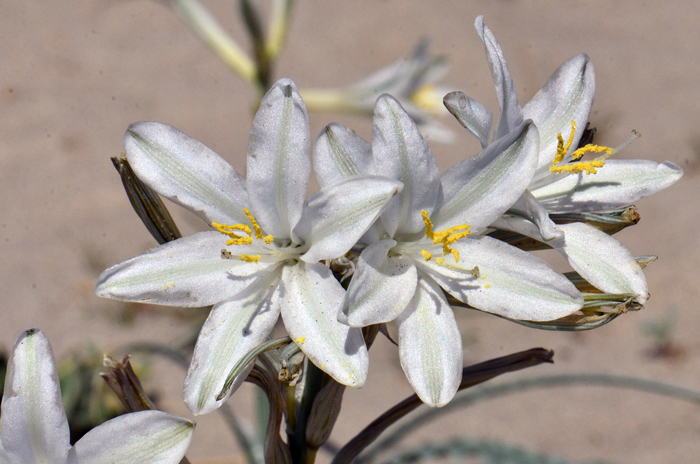
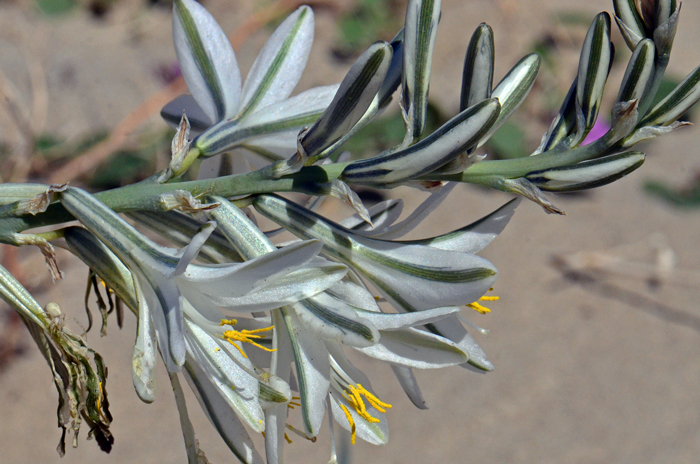
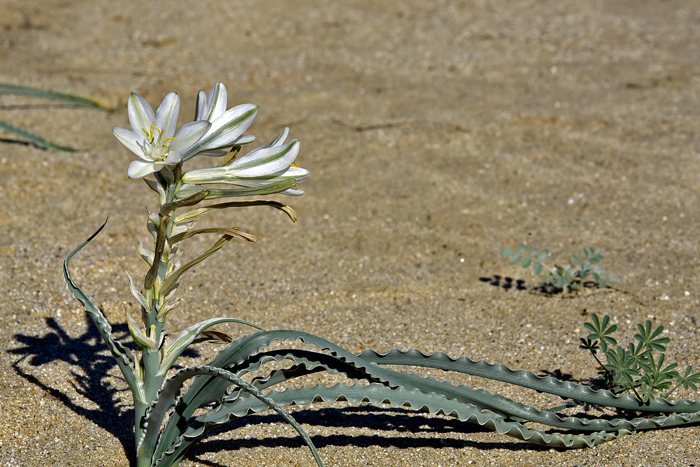
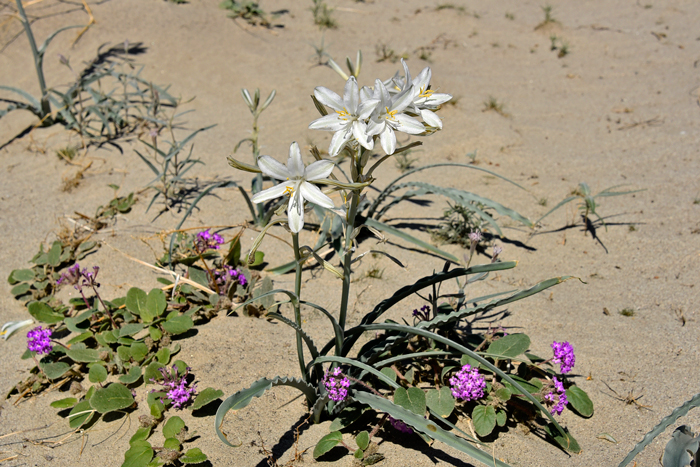
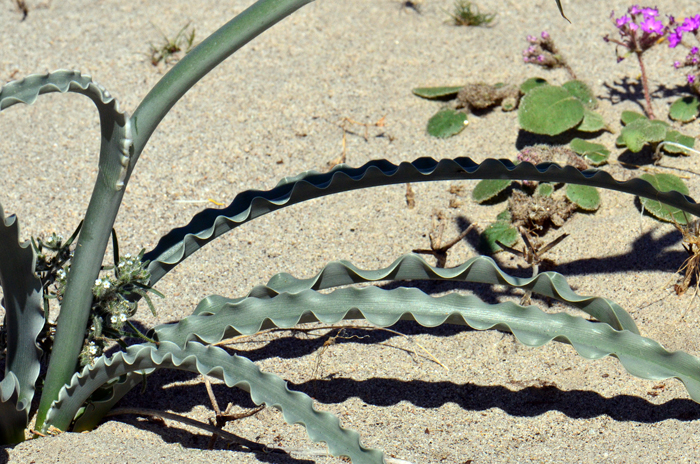
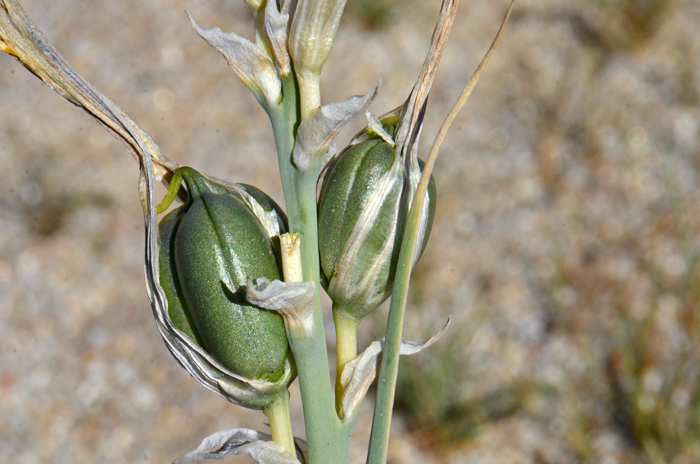
Scientific Name: Hesperocallis undulata
Common Name: Desert Lily
Also Called: Ajo Lily, Desert-lily
Family: Liliaceae or Lily Family
Synonyms: ()
Status: Native
Duration: Perennial
Size: Up to 3 feet, usually much less.
Growth Form: Forb/herb; flowering stems from a large, tunicate bulb.
Leaves: Green; basal leaves only, few leaves, leaves large with undulate-margins.
Flower Color: White or bluish-white with a green or silver-green central stripe; flowers large in a scarious-bracted stout raceme; fruit is a capsule.
Flowering Season: February to May; March to May in California.
Elevation: Below 2,000 feet.
Habitat Preferences: Sandy soil; desert communities.
Recorded Range: Hesperocallis undulata, Desert Lily is relatively rare in the United States where it is limited in populations mostly to Mojave desert habitats in AZ, CA, NV. Also found in the Lower Colorado Basin Sonoran Desert.
North America & US County Distribution Map for Hesperocallis undulata.
U.S. Weed Information: No information available.
Invasive/Noxious Weed Information: No information available.
Wetland Indicator: No information available.
Threatened/Endangered Information: In North America Hesperocallis undulata is "Salvage Restricted by the State of Arizona.
Genus Information: In North America there is 1 species and 1 accepted taxa overall for Hesperocallis. World wide, The Plant List includes 1 accepted species names and a further 1 infraspecific rank for the genus.
In the Southwestern United States there is 1 species for the monotypic genus Hesperocallis.
Comments: Hesperocallis undulata is undoubtedly one of the most dramatic, spectacular desert flowers resembling Easter lilies, in the southwestern United States. Large showy whitish trumpet shaped flowers with a thin silver green central stripe. As beautiful as it is, this plant only blooms in the spring after rainy winters. Absence wet winters this plant will only sprout one or two basal leaves!
Types from Jessup Rapids (Newberry) and Fort Mohave (Cooper).
Hesperocallis undulata has been used for food by southwestern United States indigenous peoples.
See ethno-botanical uses at Native American Ethnobotany, University of Michigan, Dearborn.

